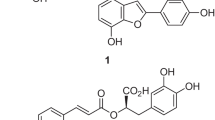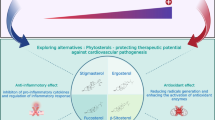Abstract
Steroidogenesis in testicular cells depends upon the availability of cholesterol within testicular mitochondria besides the activities of 3β-hydroxysteroid dehydrogenase (3β-HSD, 17β-hydroxysteroid dehydrogenase [17b-HSD]), and the tissue levels of steroidogenic acute regulatory protein (StAR), androgen-binding protein (ABP), and testosterone (T). Cellular cholesterol biosynthesis is regulated by endogenous oxycholesterols acting through nuclear hormone receptors. Plant oxysterols, such as 28-homobrassinolide (28-HB), available to human through diet, was shown to exhibit antihyperglycemic effect in diabetic male rat. Its role in rat testicular steroidogenesis and lipid peroxidation (LPO) was therefore assessed using normal and streptozotocin-induced diabetic male rats. Administration of 28-HB (333 µg/kg body weight) by oral gavage for 15 consecutive days to experimental rats diminished LPO, increased antioxidant enzyme, 3β-HSD and 17β-HSD activities, and elevated StAR and ABP expression and T level in rat testis. We report that 28-HB induced steroidogenesis in normal and diabetic rat testis.
Similar content being viewed by others
References
Lund E, Bjoerkhem I. Role of oxysterols in the regulation of cholesterol homeostasis: a critical evaluation. Acc Chem Res. 1995;28(6):241–249.
Janowski BA, Willy PJ, Devi TR, Falck JR, Mangelsdorf DJ. An oxysterol signaling pathway mediated by the nuclear receptor LXR alpha. Nature. 1996;383(6602):728–731.
Verger Ph, Leblanc JC. Concentration of phytohormones in food and feed and their impact on the human exposure. Pure Appl Chem. 2003;75(11): 1873–1880.
Stocco DM, Clark BJ. Regulation of the acute production of steroids in steroidogenic cells. Endocr Rev. 1996;17(3):221–244.
Saradha B, Vaithinathan S, Mathur PP. Single exposure to low dose of lindane causes transient decrease in testicular steroidogenesis in adult male Wistar rats. Toxicology. 2008;244(2–3):190–197.
D’Cruz SC, Vaithinathan S, Jubendradass R, Mathur PP. Effects of plants and plant products on the testis. Asian J Androl. 2010;12(4):468–479.
Page ST. Physiologic role and regulation of intratesticular sex steroids. Curr Opin Endocrinol Diabetes Obes. 2011;18(3):217–223.
Muthuraman P, Srikumar K. A brassinosteroid as an antihyperglycemic in alloxan induced diabetic rats. J Curr Sci. 2009; 10(1):19–28.
Cameron DF, Rountree J, Schultz RE, Repetta D, Murray FT. Sustained hyperglycemia results in testicular dysfunction and reduced fertility potential in BBWOR diabetic rats. Am J Physiol. 1990;259(6 pt 1):E881–E889.
Muthuraman P, Ravikumar S, Vikramathithan J, Nirmalkumar G, Srikumar K. Effect of phytohormones on tissue hexokinase and on some blood components in Wistar rats. Int J Drug Delivery. 2010;2:168–172.
Bergmeyer HU, Grassl M, Walter HE. Methods of Enzymatic Analysis. Vol 2. 3rd ed. Deerfield Beach, FL: Verlag Chemie; 1983.
Lowry OH, Rosebrough NJ, Farr AL, Randall RJ. Protein measurement with the Folin phenol reagent. J Biol Chem. 1951;193(1):265–275.
Laemmli UK. Cleavage of structural proteins during the assembly of the head of bacteriophage T4. Nature. 1970;227(5259):680–685.
Ohkawa H, Ohishi N, Yagi K. Assay for lipid peroxides in animal tissues by thiobarbituric acid reaction. Anal Biochem. 1979;95(2):351–358.
Marklund S, Marklund G. Involvement of the superoxide anion radical in the autoxidation of pyrogallol and a convenient assay for superoxide dismutase. Eur J Biochem. 1974;47(3):469–474.
Claiborne A. Catalase activity. In: Greenwald R, ed. CRC Handbook of Methods for Oxygen Radical Research. FL: CRC Press; 1985.
Beutler E, Duron O, Kelly BM. Improved method for the determination of blood glutathione. J Lab Clin Med. 1963;61:882–888.
Mooradian AD, Morley JE, Korenman SG. Biological actions of androgens. Endocr Rev. 1987;8(1):1–28.
Schroepfer GJ Jr. Oxysterols: modulators of cholesterol metabolism and other processes. Physiol Rev. 2000;80(1):361–554.
Xie W, Evans RM. Orphan nuclear receptors: the exotics of xenobiotics. J Biol Chem. 2001;276(41):37739–37742.
Stocco DM, Wang X, Jo Y, Manna PR. Multiple signaling pathways regulating steroidogenesis and steroidogenic acute regulatory protein expression: more complicated than we thought. Mol Endocrinol. 2005;19(11):2647–2659.
Svechnikov K, Landreh L, Weisser J, et al. Origin, development and regulation of human Leydig cells. Horm Res Paediatr. 2010;73(2):93–101.
Watari H, Arakane F, Moog-Lutz C, et al. MLN64 contains a domain with homology to the steroidogenic acute regulatory protein (StAR) that stimulates steroidogenesis. Proc Natl Acad Sci U S A. 1997;94(16):8462–8467.
Houk CP, Pearson EJ, Martinelle N, Donahoe PK, Teixeira J. Feedback inhibition of steroidogenic acute regulatory protein expression in vitro and in vivo by androgens. Endocrinology. 2004;145(3):1269–1275.
Ruiz de Galarreta CM, Fanjul LF, Meidan R, Hsueh AJ. Regulation of 3 beta-hydroxysteroid dehydrogenase activity by human chorionic gonadotropin, androgens, and anti-androgens in cultured testicular cells. J Biol Chem. 1983;258(18):10988–10996.
Jackson FL, Hudson JC. Altered responses to androgen in diabetic male rats. Diabetes. 1984;33(9):819–824.
Leaming AB, Mathur RS, Levine JH. Increased plasma testosterone in streptozotocin-diabetic female rats. Endocrinology. 1982;111(4):1329–1333.
Ho SM. Prostatic androgen receptor and plasma testosterone levels in streptozotocin-induced diabetic rats. J Steroid Biochem Mol Biol. 1991;38(1):67–72.
D’Aniello A, Di Cosmo A, Di Cristo C, Annunziato L, Petrucelli L, Fisher G. Involvement of D-aspartic acid in the synthesis of testosterone in rat testes. Life Sci. 1996;59(2):97–104.
Tindall DJ, Means AR. Concerning the hormonal regulation of androgen binding protein in rat testis. Endocrinology. 1976;99(3):809–818.
Danzo BJ, Pavlou SN, Anthony HL. Hormonal regulation of androgen binding protein in the rat. Endocrinology. 1990;127(6):2829–2838.
Matsunami T, Sato Y, Sato T, Yukawa M. Antioxidant status and lipid peroxidation in diabetic rats under hyperbaric oxygen exposure. Physiol Res. 2010;59(1):97–104.
Aitken RJ, Roman SD. Antioxidant systems and oxidative stress in the testes. Oxid Med Cell Longev. 2008;1(1):15–24.
Muthuraman P, Srikumar K. A comparative study on the effect of homobrassinolide and gibberellic acid on lipid peroxidation and antioxidant status in normal and diabetic rats. J Enzyme Inhib Med Chem. 2009;24(5):1122–1127.
Smith LL. Cholesterol Auto Oxidation. New York, NY: Plenum Press; 1981:1–674.
Muthuraman P, Srikumar K. Induction of hexokinase I expression in normal and diabetic rats by a brassinosteroid isoform. Eur J Pharm Sci. 2010;41(1):1–9.
Author information
Authors and Affiliations
Corresponding author
Rights and permissions
About this article
Cite this article
Premalatha, R., Jubendradass, R., Rani, S.J.A. et al. A Phytooxysterol, 28-Homobrassinolide Modulates Rat Testicular Steroidogenesis in Normal and Diabetic Rats. Reprod. Sci. 20, 589–596 (2013). https://doi.org/10.1177/1933719112459241
Published:
Issue Date:
DOI: https://doi.org/10.1177/1933719112459241




